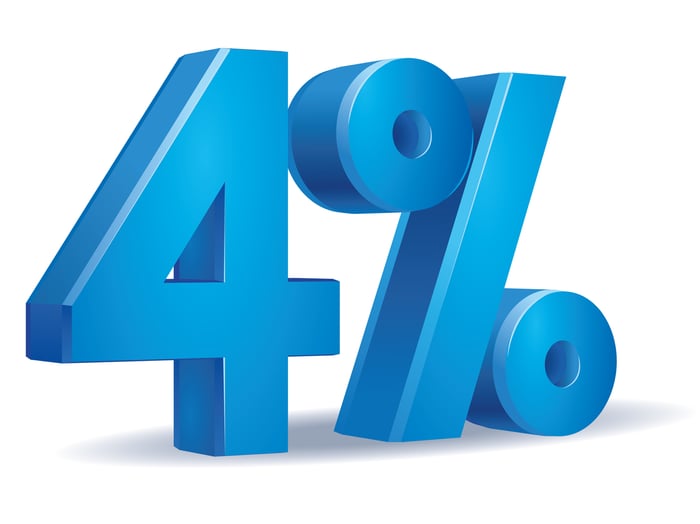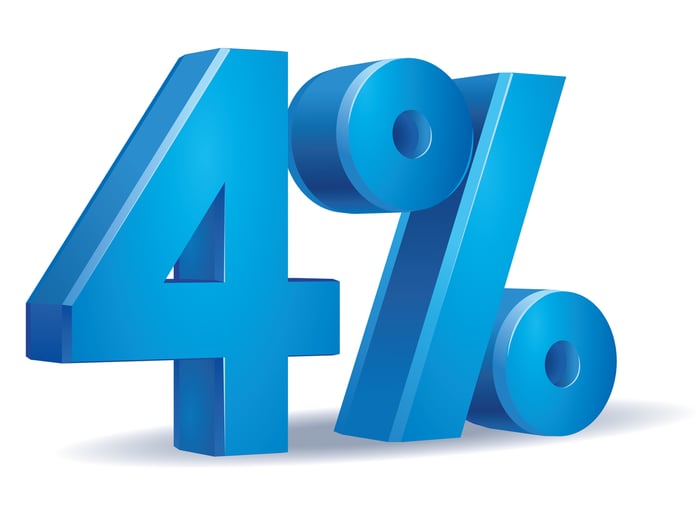Table of Contents
Key Points
-
William Bengen now says a withdrawal rate of 4.7% may be more appropriate.
-
Retirees who can cut back a little during rough market years tend to do better than those who consistently withdraw the same amount, no matter what happens.
-
Another withdrawal strategy is to align annual withdrawals with remaining portfolio value, thereby adapting to market fluctuations.
- The $23,760 Social Security bonus most retirees completely overlook ›
If you've spent most of your adult life hearing that your withdrawal strategy in retirement requires withdrawing no more than 4% of your retirement account balance annually, you’re not alone. The 4% rule was invented by researcher and financial planner William Bengen in the 1990s and caught on like wildfire.
A change of heart (and calculations)
Today, Bengen believes that planning for retirement should include a withdrawal rate of 4.7%. Here’s why: Back in the 1990s, Bengen based the 4% rule on a simple portfolio of U.S. large-cap stocks and intermediate-term government bonds. He looked for a withdrawal rate that could hold up in even the “worst-case” scenarios, like the Great Depression.
Where to invest $1,000 right now? Our analyst team just revealed what they believe are the 10 best stocks to buy right now. Continue »
Since that time, Bengen says that markets (and portfolios) changed to include large-cap, mid-cap, small-cap, and international stocks, in addition to bonds and cash. These broader asset classes mean that 4.7% is a sustainable withdrawal rate.

Image source: Getty Images.
How it works
In his new book, A Richer Retirement: Supercharging the 4% Rule to Spend More and Enjoy More, Bengen calls for withdrawing 4.7% of your portfolio in the first year of retirement. After that, withdrawals should be adjusted for inflation. Following this rule, your money is expected to last for 30 years.
While Bengen's new book (and new rule) garners excellent reviews, not everyone is on board.
Potential issues with the 4.7% rule
According to Boldin, a financial-tech company specializing in retirement planning software, the 4.7% rule is a great starting point but not a one-size-fits-all prescription. The reason why is simple: It's unlikely that your spending will remain stable over your lifetime, and a fixed-percentage withdrawal may not work in practice.
For example, early in retirement, you may still be in great shape and require a 4.7% withdrawal to fund trips and excursions. Later, your expenses (and withdrawal needs) may lessen. Or due to health issues, you may need a larger amount of money withdrawn from your retirement accounts. You can’t ever be sure.
Your individualized income strategy may not be based on a single withdrawal number but will become a living plan that changes with your life, goals, and the markets.
The tricky bit
Without the ability to see the future, individualizing your income strategy in retirement can be tricky.
Fidelity points out that the budgeting process stalls for some before it even starts. People focus on the details of their nice-to-have spending before concentrating on the big picture.
Start by knowing how much your essential expenses will be, including things like housing, groceries, healthcare, transportation, utilities, and other costs you're sure to be responsible for. Next, create a discretionary budget focusing on what you'd like to spend money on in retirement. This may include holidays, travel, and entertainment.
Ideally, you can cover essential expenses with guaranteed income sources like Social Security, pensions, and annuities, and pay for discretionary purchases using money from your retirement account.
Paying for discretionary expenses with money from your retirement accounts means that you are unlikely to withdraw the same amount each year. Let's say you've got a big trip planned during your first year of retirement. You may need to withdraw 4.7% to cover the cost of your adventure. However, if you plan to do a little fishing, pick up a new hobby, and spend more time with family, there's no reason to withdraw 4.7% if you don't need it to pay bills.
In other words, prepare to be flexible. A 4.7% withdrawal rate may be a good starting point, if only to illustrate how long your money will last, but it's not written in stone.
The $23,760 Social Security bonus most retirees completely overlook
If you're like most Americans, you're a few years (or more) behind on your retirement savings. But a handful of little-known “Social Security secrets” could help ensure a boost in your retirement income.
One easy trick could pay you as much as $23,760 more… each year! Once you learn how to maximize your Social Security benefits, we think you could retire confidently with the peace of mind we’re all after. Join Stock Advisor to learn more about these strategies.
View the “Social Security secrets” »
The Motley Fool has a disclosure policy.


